

|
Inside Out |
A brief look at museums and collections treasuresFolio Staff Located inside various buildings, nooks and crannies throughout the University of Alberta are the diverse artifacts and specimens of the Department of Museums and Collections Services. There are some17 million objects in 40 different collections. The largest is the mural on the education building, while the smallest is likely a parasite or bug. From dinosaur fossils to an ichthyology collection containing an impressive number of stickle back fish, the collections at the University of Alberta are diverse and valuable research and teaching tools. The Department of Museums and Collections Services are excited to be hosting the 13th Annual Meeting of the Society for the Preservation of Natural History Collections-Collections on the Move: Strategies For The New Millennium from May 25th to 30th, 1998. The University of Alberta will bring together professors, curators, technicians and administrators for discussions on the changing roles and responsibilities of those who work with collections.
|
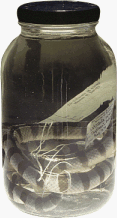
Sea snakes (Australia), Museum of Zoology, Department of Biological Sciences |
Certain sights, sounds, and smells announce the beginning of a season. Birds call to staff and students who respond by casting off winter's cloister to enjoy lunch on the lawns. And grounds keepers become as common a sight as the budding flora.
Spring is the busiest time of year for Grounds and Transportation as winter's retreat is marked by a trail of broken branches, decayed leaves, and other debris. Winter storm damage this year made it necessary to replant 70 trees -- evergreen, spruce, hawthorne, chestnut, apple and ash.
The full-time staff of 19 is responsible for maintaining 100 hectares of grounds including 15 hectares of boulevards. Everything needed is grown at the off-campus greenhouse, home to more than 30,000 bedding plants -- petunias, snapdragons, marigolds, dusty miller, portulaca and geraniums -- an enormous variety of trees, perennials and even tropical plants.
A greenhouse extension will be added this year to house an additional 100 elm saplings to replace trees that might be lost if Dutch elm disease hits the Edmonton area.
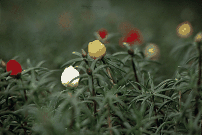
Portulaca -- one of the many bedding plants |
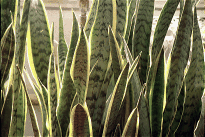
Croton -- with characteristic yellow border leaves |
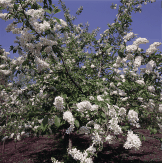
Flagrant maydays blooming on campus |
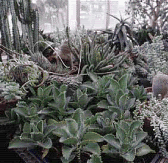
Plethora of cacti thrives in the warmth of the greenhouse |
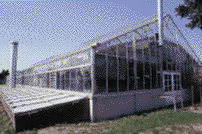
Grounds greenhouse located on the north-west corner of the university. farm |
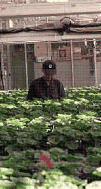
Greenhouse manager, Bob Abbott tending to his more than five different types of geraniums. |
![[Folio]](http://www.ualberta.ca/~publicas/folio/gif/small/folio.gif)
Folio front page |
![[Office of Public Affairs]](http://www.ualberta.ca/~publicas/gif/small/opahome.gif)
Office of Public Affairs |
![[University of Alberta]](http://www.ualberta.ca/~publicas/gif/small/uahome.gif)
University of Alberta |